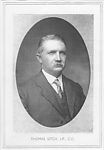 Thomas Sitch
Thomas Sitch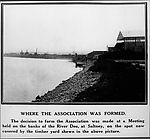 Coal Wharf, Saltney
Coal Wharf, Saltney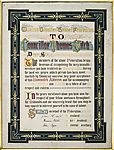 Illuminated Address presented to Thomas Sitch by the Midland Counties Trades Federation
Illuminated Address presented to Thomas Sitch by the Midland Counties Trades Federation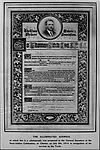 Illuminated Address presented to Thomas Sitch by the Chainmakers' and Strikers' Association
Illuminated Address presented to Thomas Sitch by the Chainmakers' and Strikers' Association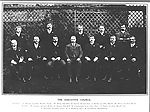 The Executive Council- Thomas Sitch is seated centre
The Executive Council- Thomas Sitch is seated centre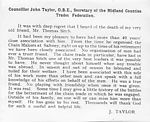 Tribute - Midland Counties Trades Federation
Tribute - Midland Counties Trades Federation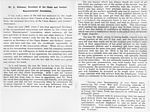 Tribute - Chain and Anchor Manufacturers' Association
Tribute - Chain and Anchor Manufacturers' Association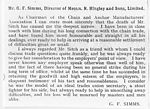 Tribute - N. Hingley and Sons Ltd
Tribute - N. Hingley and Sons Ltd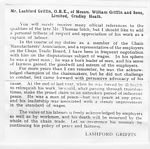 Tribute - Messrs. William Griffin and Sons Ltd
Tribute - Messrs. William Griffin and Sons Ltd

Thomas Sitch was a champion of the Women Chainmakers of Cradley Heath. He was the General Secretary of the Chainmakers' and Strikers' Association, and saw to it that the C.M.S.A. played a leading part in the long agitation, which resulted in the inclusion of the hammered and dollied branches of the chain trade in the Trade Boards Act of 1909. He played a leading role in the 1910 Women Chainmakers' Strike, and was one of the original Trustees of the Cradley Heath Workers' Institute, built using the strike fund surplus. In the C.M.S.A.'s Semi-Jubilee Souvenir booklet, Mary Macarthur wrote in her congratulations to the Association, "If all the Trade Unions in the country had rendered as much service to women workers as the Chainmakers' and Strikers' Association has, women's industrial organisation would leave much less to be desired than it does today." (p15)
Thomas was born in Lomeytown, Cradley Heath in 1852, the son of a chainmaker. He started his working life at the age of eight, blowing bellows in a local chain shop, and ended it as, "one of the most powerful forces in the trade, whose views one way or the other meant a good deal, not only locally, but nationally as well." ( County Express, Stourbridge, 28th April, 1923) So how did he rise from such humble beginnings?
Thomas moved to Tipton with his family, and up to the age of seventeen was employed by Messrs. H.P. Parkes as a "striker". Strikers worked with skilled chainmakers, and were responsible for striking the chain links to weld them together. Thomas later qualified as a maker of small chain.
He and his family moved to Newcastle-on-Tyne. It was a time of "mushroom" unionism in the Black Country. That is to say, organised groups of workers would start a union, but within weeks it would disappear. Trade union organisation was much stronger in Newcastle and the North East. Thomas was soon appointed as union secretary at the factory where he was employed. He also became the youngest delegate on the Newcastle Trades Council. It was in Newcastle, in 1877, that he married Miss E. Young. Mrs. Sitch took an interest in union members and their families and was involved in the work of the Women's Trade Union League. Thomas and his wife had nine children.
Thomas moved again, this time to Chester, to take up employment with Messrs. H. Wood & Co. It was here that he founded the Saltney, Pontypridd and Staffordshire Association, which in 1889 became known as the Chainmakers' and Strikers' Association. Initially, members were drawn only from Woods & Co and numbered just 15. By 1890, however, when Thomas returned to his native Cradley Heath, membership had increased to 360. Thomas had decided to give his whole time to union work, and by 1914 membership had increased again, to 1,300. This figure included every employee in the factory branch of the chain trade at the time. By 1922 membership of the Chainmakers' And Strikers' Association had increased to 2,000.
Thomas continued as the General Secretary of the Chainmakers' and Strikers' Association until just before he died. Ill health and failing eyesight led to his retirement. His son, Charles, succeeded him as Secretary of the Union. During his period of office, Thomas had achieved a great deal. In the Semi-Jubilee Souvenir booklet, celebrating 25 years of the C.M.S.A., it is said of Thomas, "From the day when Mr.Sitch set foot in Cradley Heath 20 years ago astonishing progress has been made in the chain trade. The operatives have reaped many great advantages. Their conditions of employment have been vastly improved.... and greatest of all, their rate of wages is now out of all proportion to what it was." (pp.8-9)
He helped to uncover the scandal of "bogus certificates". Purchasers of chain, on which human life depended, as in lifting apparatus for example, were anxious to know that the chain had been properly tested to make sure that it could withstand the strain put upon it. Reputable companies carried out such tests. Less reputable manufacturers, however, sold chain with accompanying, imposing certificates, which claimed that the chain had withstood certain tensile tests, when it had not been tested in any way. In fact, at a meeting in Dudley, Thomas was able to produce two certificates of testing for chain that had not even been made! Much of the chain with bogus certificates was sent abroad with the result that the reputation of British chainmaking suffered.
In 1908, Thomas and a representative from Hingley's, set off on a mission to Germany. A company based in Duisburg on the banks of the Rhine advertised in the Newcastle Chronicle for two cable-chain makers and four strikers. Six workers from Noah Hingley's factory agreed to go. The art of making chain by hand was practically a British monopoly at the time. Thomas and officials of the C.M.S.A. were concerned that knowledge and skills built up over many years in England would be passed on to foreign chainmakers, which would allow them to compete with Britain for the chain business. On his first visit to Germany, Thomas was unable to convince the men to leave, but a few weeks later they changed their minds. Thomas returned to Germany with Mr. Sydney Fellows. Communicating with the men was difficult, because they were under strict observation, but in passing the men one day, Mr. Fellows was able to slip a note into the hand of one, telling them to be at the railway station the following day. They returned to the Black Country to carry on their trade.
Thomas was also active in lobbying to include a "Particulars Clause" in the Factory Act. It struck at the evil of "sweating", where workers were at the mercy of unscrupulous employers. The "Particulars Clause" required all government contractors for chain to pay the same rates, and provide all in and out workers with particulars of the size of iron and price, in writing, when work was taken out. The chain trade was one of the first industries to secure this.
Like many trade union officials at the time, Thomas had an impressive record of public service, stemming perhaps from his Baptist convictions. He was honoured in his lifetime, the illuminated addresses shown here being just two of many he received. The Midland Counties' Trade Federation also presented Thomas with a gold watch and a marble clock and bronze ornaments. He received a silver tea and coffee service on leaving Chester; an onyx timepiece and ornaments from the chainmakers at Ford Green; and on retiring as Secretary of the Anchorsmiths, a silver tea urn.
Thomas was also honoured in death. The tributes, some of which are reproduced here, bear witness to the very high regard in which he was held. He died at his home, Unity Villa, Sydney Road, Cradley Heath, which had been built for him by the C.M.S.A. as a combined residence and office.
The funeral service, held at the Baptist Church, was attended by representatives of the county and municipal authorities, political organisations, masters and employees in the chain and associated trades. Crowds lined the streets to pay their respects as the funeral procession, headed by mounted police, made its way to St. Luke's Churchyard. It was said at the time that the procession was the longest ever seen in the district.
At the Biennial Conference of the Chainmakers' And Strikers' Association, held at the Workers' Institute in July 1923, the chairman, Mr Alfred Westwood said, "By the way that they paid their respects when they laid him to rest shows to us that he was no mean man, but a gentleman, and a friend to us all." He added that as it says, "in the good old book,'Ye are the salt of the earth'. He has sweetened our lives, both mine and yours."
Rollover the captions in the box to see the available images in thumbnail format, click the caption to see the full-size image
| Reference: | 677 |
| Keywords: | |
| Archive Ref: | 1985-260-001 |
| Updated: | Thu 12 Jul 2007 - 1 |
| Interpretation written by | Barbara Harris |
| Author's organisation | |
| Organisation's website |